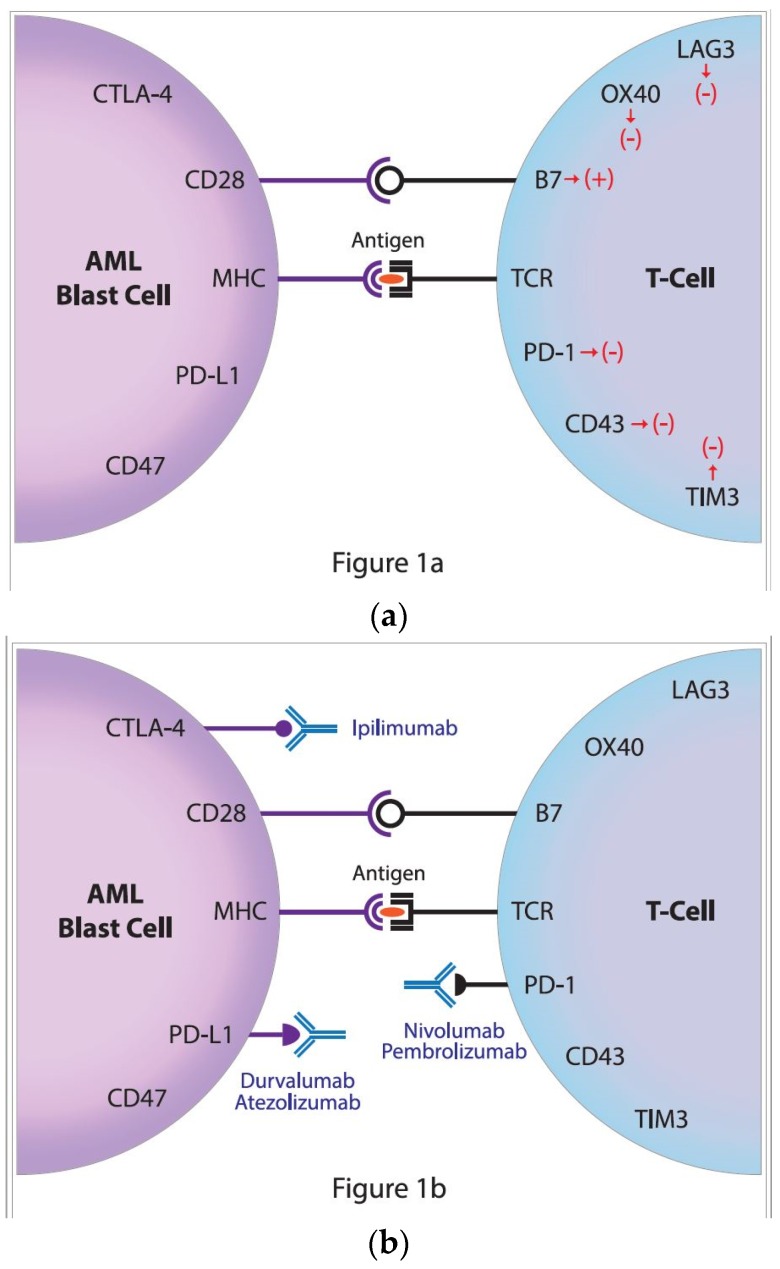Figure 1.
(a) The regulation of antileukemic immune response; the activation of an immune response requires two signals. The first is responsible for the specific recognition of antigen (peptide) located in the great groove of the major histocompatibility complex (MHC) by the T-cell receptor (TCR). The second is the costimulatory signal that is transmitted by the interaction of CD28 and B7 molecules. These signals are regulated by many negative receptors including the lymphocyte-activation gene 3 (LAG3), OX40, programmed cell death protein 1 receptor (PD-1), CD43 as well as T-cell immunoglobulin domain and mucin domain 3 (TIM3) on the T cell that interacts with ligands on acute myeloid leukemia (AML) blasts, i.e., CD47, programmed death-ligand 1 (PD-L1) and Cytotoxic T-lymphocyte Antigen-4 (CTLA-4). (b) The restoration of antileukemic immune response by the targeting of the negative control checkpoints. In order to restore the antileukemic immune response, two inhibitory immune checkpoint molecules might be targeted by treatment with specific monoclonal antibodies directed against the cytotoxic T-lymphocyte antigen-4 (CTLA-4), ipilimumab, and the programmed cell death protein 1, nivolumab and pembrolizumab as well as PD-L1, atezolizumab and durvalumab.

